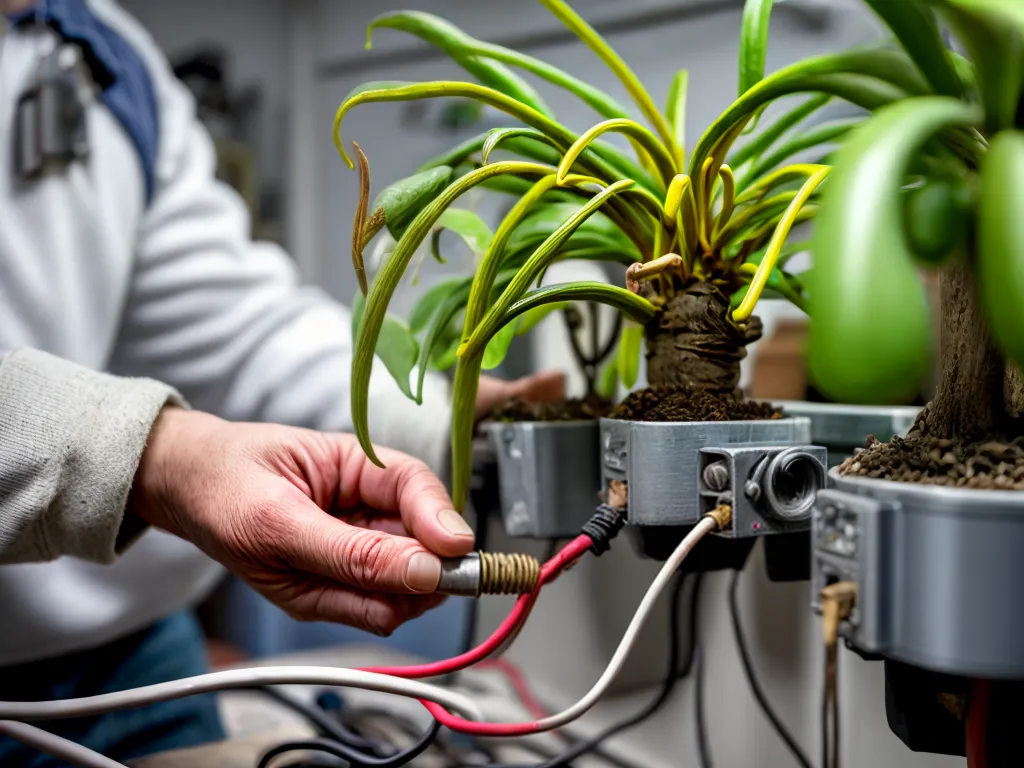
Choosing the right wire gauge is critical when wiring a plant or facility. Selecting wire that is too small can lead to overheating, voltage drops, loss of power, and even fires. As the chief electrician, it's my responsibility to size wiring appropriately to handle expected electrical loads. I never want to cut corners on wire gauge - doing so risks equipment damage, power failures, and safety hazards.
How Wire Gauge Relates to Current and Temperature Rise
The gauge of a wire relates directly to how much current it can safely carry. Thicker wires can accommodate more current flow. Here's a brief overview of the key factors:
-
Wire diameter - Thicker wires have more cross-sectional copper area for current to flow through.
-
Current capacity - Larger gauge wires can carry more amps without overheating.
-
Temperature rise - When electricity flows through a conductor, resistance causes heat. Smaller wires heat up faster.
-
Voltage drop - Longer wire runs with inadequate gauge can result in excessive voltage drop. This robs equipment of proper voltage.
To prevent overheating and excessive voltage drop, wire must be sized appropriately for the expected current load. Undersized wiring can lead to failure.
Check Nameplate Current Ratings Before Choosing Wire Size
The first step in choosing proper wire gauge is checking nameplate ratings on all connected equipment. This provides the maximum current draw in amps. For example:
-
Motors list full load amps (FLA)
-
Heaters and boilers show amperage
-
Other devices list rated load in amps
Add up the total current for all equipment to be wired. This provides the minimum wire gauge size.
I always consult nameplates and catalogs to find equipment amp ratings. Never rely on guesses or rules of thumb. The actual current ratings are critical for proper wire sizing.
Follow Code Requirements for Wire Ampacity
The National Electrical Code (NEC) specifies required ampacity for various wire sizes. Ampacity is the maximum current a wire can safely carry without overheating. These ampacity tables account for:
-
Temperature - Heat causes resistance and power losses.
-
Insulation type - Materials like PVC limit max temperature.
-
Conductor type - Copper versus aluminum have different resistance.
-
Wiring method - Open air, conduit, etc. affect heat dissipation.
I keep a copy of the NEC ampacity tables handy when sizing plant wiring. This ensures each wire gauge meets code for the circuit current. Undersized wiring can overheat, presenting a fire hazard.
Leave Headroom with 80% Wire Capacity Rule
When sizing wiring, I follow the 80% capacity guideline stated in the NEC. This states conductors should only be loaded to a maximum of 80% their rated ampacity.
This leaves headroom to account for:
- Future loads - Additional equipment may be added later.
- Increased runtime - Overtime and 24/7 operation.
- Motor inrush - Startup surge when motors first turn on.
- Temporary overloads - brief spikes beyond normal loads.
By limiting wires to 80% capacity, I leave a safety margin to handle these contingencies. Wires will run cooler and avoid overload.
Don't Forget Ambient Temperature Adjustments
Wire ampacity is rated based on an ambient temperature of 30°C (86°F). However, many electrical rooms run hotter.
The NEC requires adjusting ampacity downward when ambient temperatures exceed 30°C:
- 40°C (104°F) = 0.88 reduction
- 50°C (122°F) = 0.79 reduction
For example, a wire rated for 100A at 30°C can only handle 79A at 50°C.
I always account for hot electrical room temperatures when sizing wires. Undersized for temperature can still overheat. A thermometer helps determine the actual ambient temperature.
Voltage Drop Guidelines Keep Power Flowing
Voltage drop is another key factor I check when choosing wire size. As power flows through a wire, resistance causes some voltage to be lost. The longer the wire run, the greater the drop.
Excessive drop will result in equipment not getting the full voltage needed to operate properly. Motors will have less starting torque and may overheat. Lighting will dim. Electronics may malfunction.
The NEC recommends voltage drop be limited to:
- Feeders: 3% or less
- Branch circuits: 5% or less
Larger gauge wires help minimize drop. I perform voltage drop calculations on long runs and size wires accordingly. Proper voltage must be maintained for reliable equipment function.
Case Study: 500 HP Motor Wire Sizing
Let's walk through a real world example sizing feeder wires for a 500 HP motor:
-
Step 1) Check motor nameplate for full load amps (FLA) = 527A
-
Step 2) Per NEC, size for 125% of FLA for motor loads = 1.25 x 527A = 659A
-
Step 3) De-rate wire ampacity 80% = 0.8 x 659A = 527A
-
Step 4) Consult NEC ampacity tables. For THHN wire in conduit at 75°C, the minimum size is 500 kcmil, rated for 555A.
This example demonstrates the importance of carefully calculating the current load, not just guessing. Oversizing is safer than undersizing wire gauge.
Don't Cut Corners on Wire Sizing
Selecting the proper wire gauge on the first install is critical. Here are my key recommendations when wiring any facility:
- Accurately determine total equipment amp load
- Consult NEC ampacity tables - don't guess
- Size wires for 125% of load for motors
- De-rate to 80% of ampacity for margin
- Adjust for high ambient temperatures
- Mind voltage drop guidelines on long runs
Undersized wiring can lead to overheating, voltage issues, premature failures, and serious hazards. Do it right the first time - don't skimp on the wire gauge!